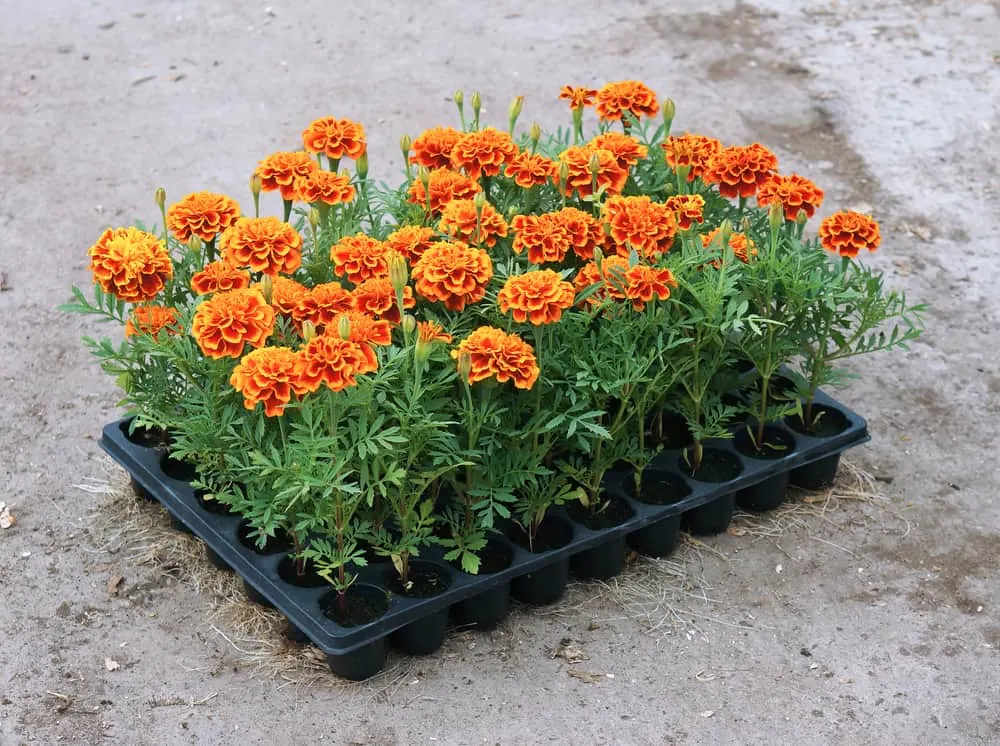
Gardeners often focus on the damaging pests that attack and kill tomatoes. Understandably so, as they can destroy not just tomatoes, but your entire garden.
However, not all bugs are bad.
There are beneficial insects that will eat or destroy the pests you’re trying to get rid of, resulting in happy, healthy tomatoes. Don’t panic when you see these eight bugs on your tomato plants, they are trying to help you out.
1. Minute Pirate Bug
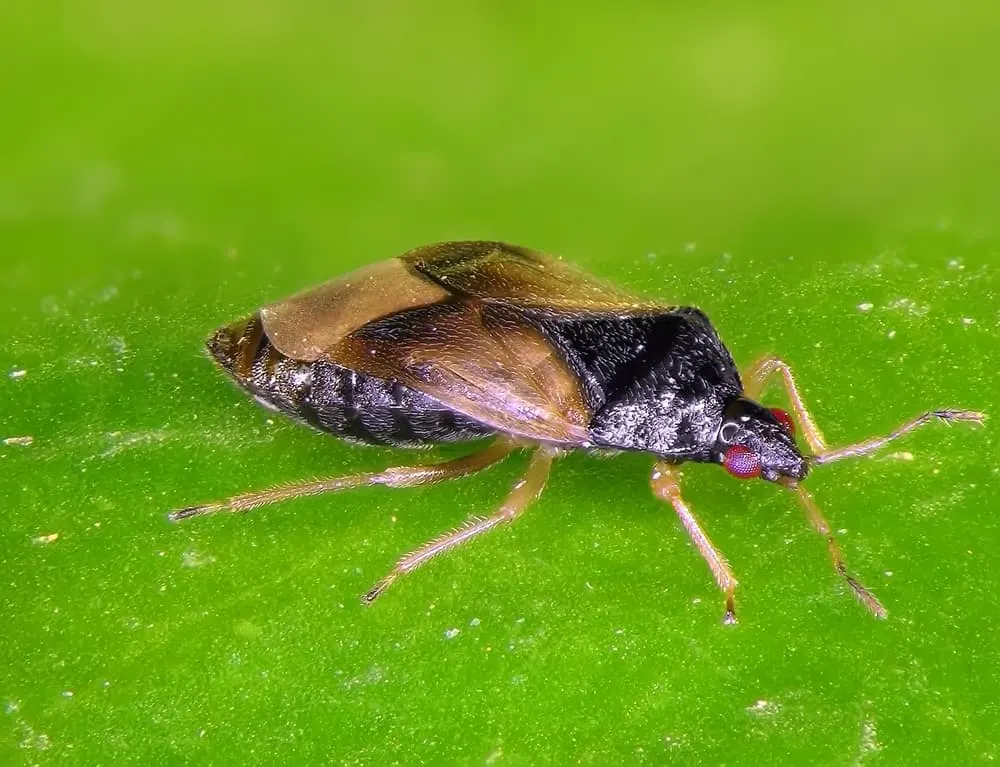
Minute pirate bugs, also known as flower bugs, are tiny predatory insects. These little critters are very tiny indeed. Adults are only one-fifth of an inch long. But you can spot them easily due to their deep purple or black color and white wingtips.
Minute pirate bugs prey on aphids, thrips, and spider mites. Studies suggest flower bugs can consume as many as thirty spider mites each day. All these pests have the potential to be extremely harmful to tomato plants. Don’t get too close to pirate bugs though (even if it is to say thank you) as they are known to bite humans too.
2. Trichogramma wasp
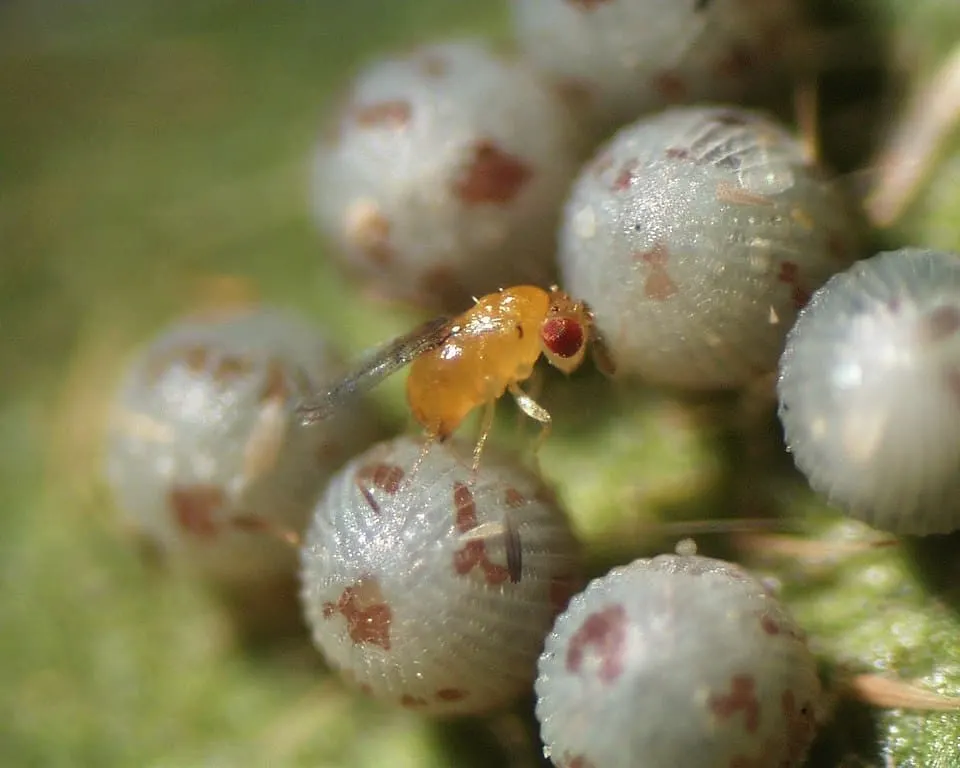
These wasps are completely harmless, typically feeding on pollen and nectar. However, the young wasps are the most beneficial insects to have in your garden, as they stop pests before any damage occurs.
Trichogramma wasps are parasites that attack the eggs of moths and worms. They are extremely useful in the war against tomato hornworms, cutworms, and a variety of other pests that negatively affect tomato plants.
Female wasps lay their eggs inside the eggs of the various caterpillar species. Once hatched, the baby Trichogramma wasp feeds on the nutrients in the host egg. These garden friends have the potential to eliminate these bad pests from your garden.
3. Paper wasps
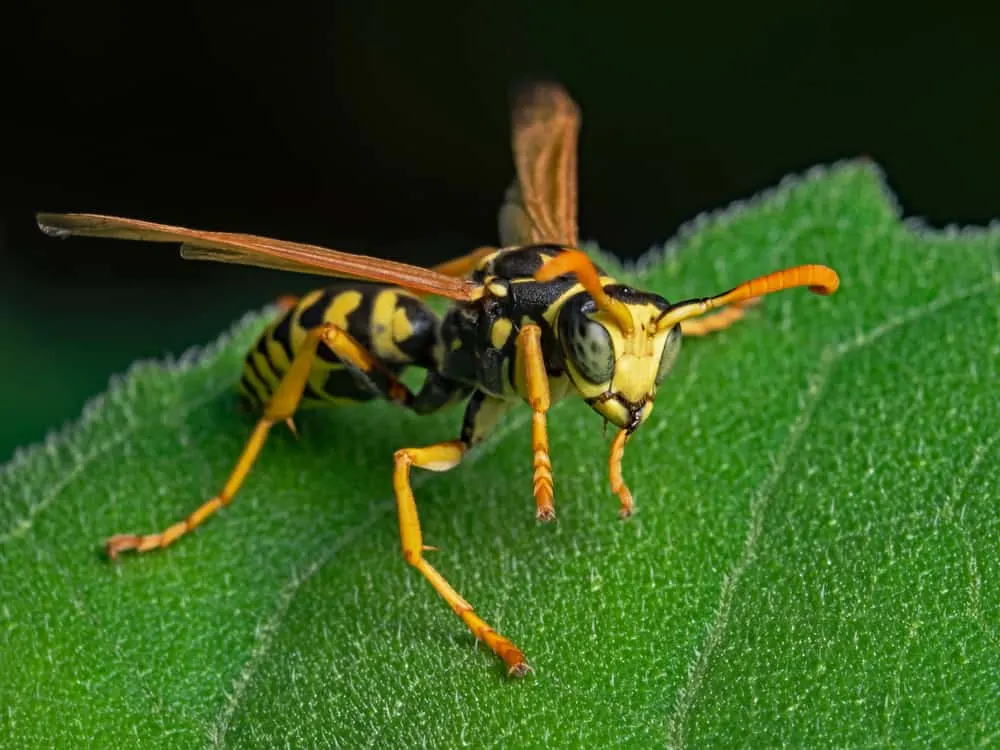
Much like Trichogramma wasps, paper wasps are efficient beneficial insects. Their name comes from their paper-like hives. They are known to sting humans but aren’t particularly aggressive insects when left alone.
There are several species of paper wasp. They are usually slender, with yellow markings and black wings.
They do a wonderful job of ridding tomatoes of various pests, most importantly, the dreaded hornworm. Female paper wasps lay their eggs inside hornworm hosts. When the eggs hatch, they become parasites, ultimately killing the pest.

Not only are wasps beneficial in pest control, but they aid in the general health and success of your garden. Like bees, wasps aid in pollination. Nectar attracts wasps, which carry pollen on their bodies to and from flowering plants.
4. Spiders
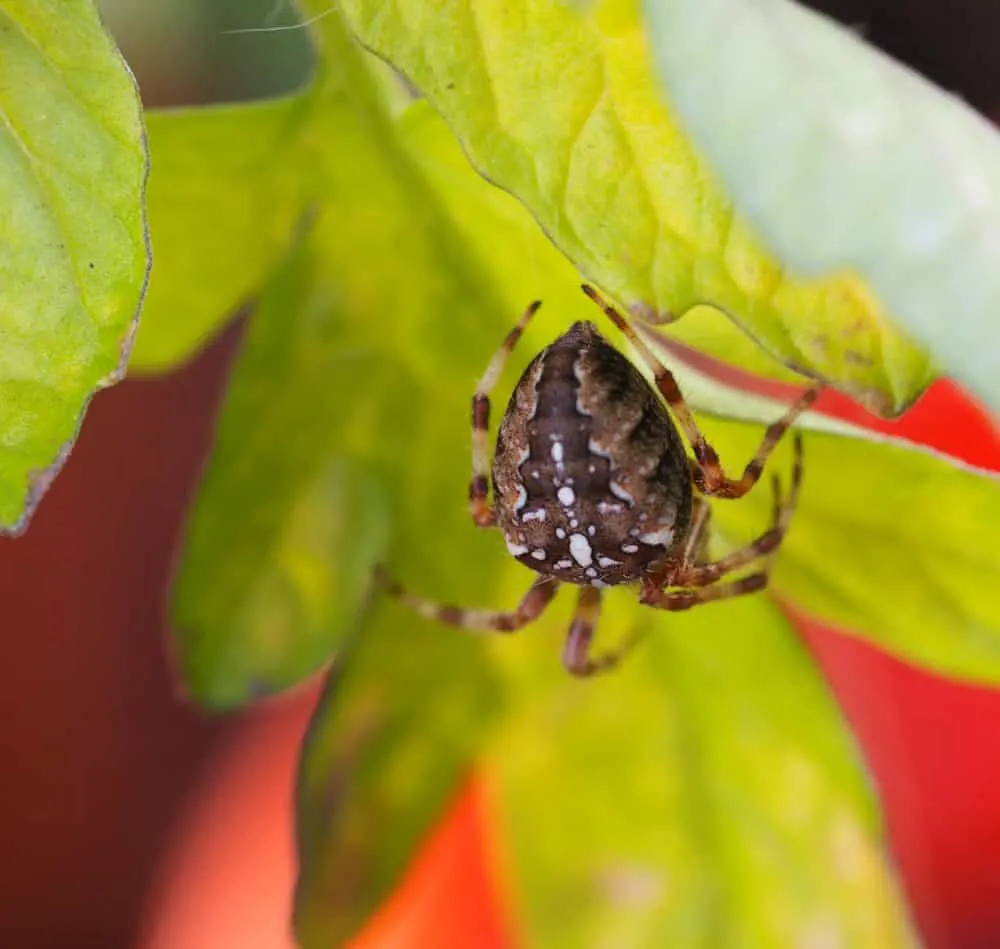
Spiders are useful pest predators, keeping back grasshoppers, whiteflies, and aphids, depending on the species. Some may use their webs to trap prey; others actively hunt.
Spiders do absolutely no damage to tomato plants. In fact, they are vital for overall garden health, feeding on many of the pests that are known to cause havoc in gardens.
As gardeners are aware, while they are important in the garden, it is still important to stay away from them while gardening. Several species are very dangerous to humans, including the black widow and recluse spiders.
5. Ladybugs

Despite their pretty colors, ladybugs (or lady beetles) are indeed predatory insects. They primarily prey on aphids, mites, whiteflies, and mealybugs. They aid in population control, and eventually the complete removal of these pests.
Though they are beneficial, ladybugs are the most effective once they’ve established a colony in your garden.
Planting flowers such as marigolds and roses will attract ladybugs, and refraining from using insecticides and watering well will convince them to stay.
You can even buy ladybugs on the internet and release them into your garden. But you might want to learn how to get them to stick around before you do that.
6. Lacewings

Lacewings are small pest predators efficient in ridding tomato plants of small, soft-bodied pests, such as mites.
Adult lacewings are green with fragile wings. They grow to approximately three-quarters of an inch and are abundant throughout the year, specifically in greenhouses.
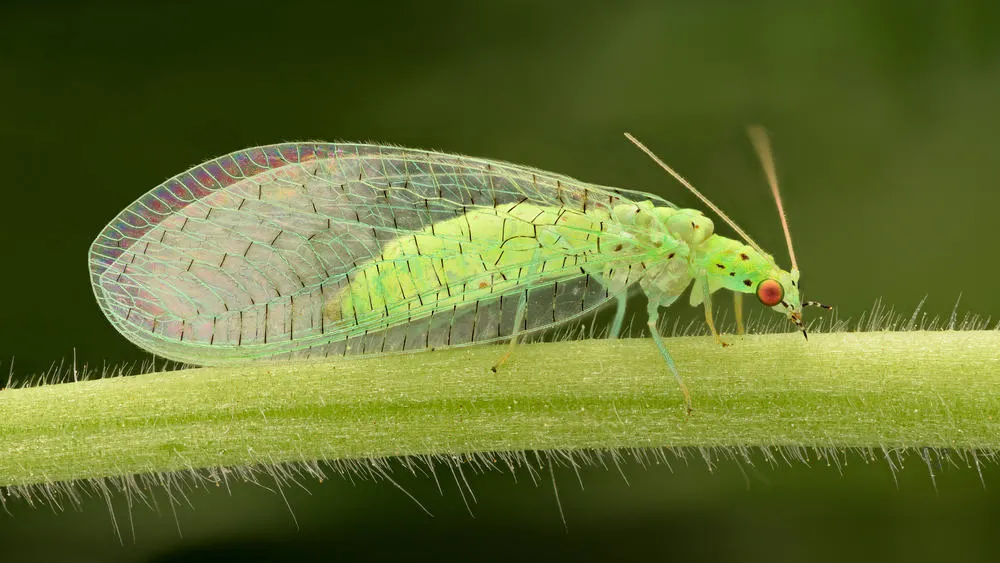
Lacewings mostly feed on nectar, pollen, and aphid honeydew. However, for lacewing larvae, aphids are their preferred food source. The larvae inject digestive secretions into the captured aphid. These secretions will dissolve the aphid’s organs, allowing them to be easily eaten.
Lacewings, like ladybugs, are vulnerable to toxic insecticides, so avoid using those at all costs. They enjoy the shelter given by plants with heavy foliage, but won’t stay in your garden long if they’ve succeeded in destroying the aphid population.
7. Big-eyed bug (Geocoris)

Big-eyed bugs are aptly named, with have broad heads with large protruding eyes. Adults are only between one-quarter and one-eighth of an inch long and usually are black or brown in color, with translucent wings. These insects feed on small soft-bodied pests, as well as various species of caterpillars and worms.
However, there is a downside to this beneficial insect. They are attracted to the nectar of flowering plants, and the sap of fruits, including tomatoes. If there are no pests to dine on, they will resort to their sap-sucking ways. Keep an eye out for them. You will need to remove them once they’ve solved your bad bug problem, before they become bad bugs themselves.
8. Rough stink bug
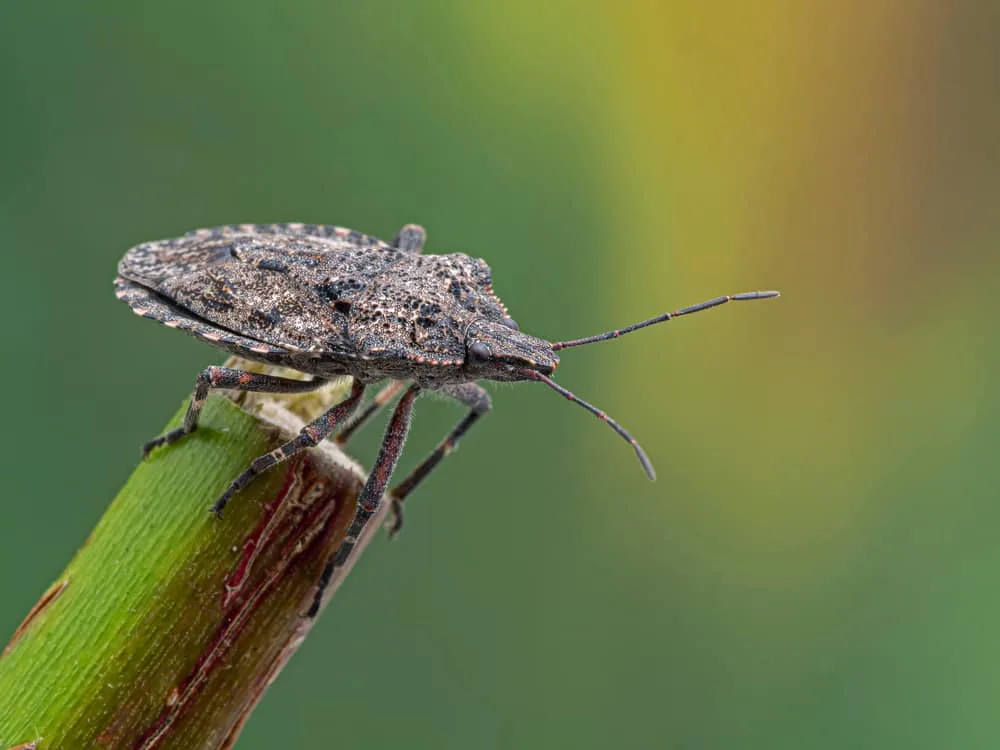
Unlike the majority of stink bug species, the rough stink bug is not harmful to plants. Easily identified by their typical stink bug shield shape and rough, grey dappled coloring, they should not be confused with the brown marmorated stink bugs.
Rough stink bugs, much like the other beneficial insects, feed on aphids. But both adults and larvae are known to eat caterpillars and beetles. Using their sharply shaped mouth, they suck the internal fluids out of the pests, killing them. Certainly a useful companion in any garden, but particularly a tomato garden.

